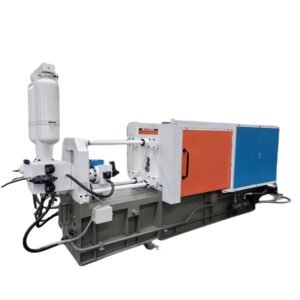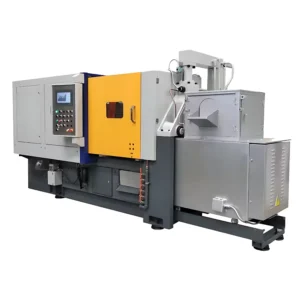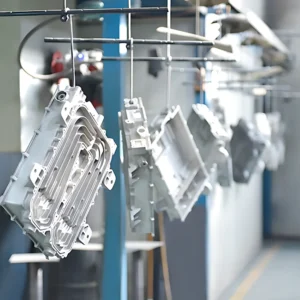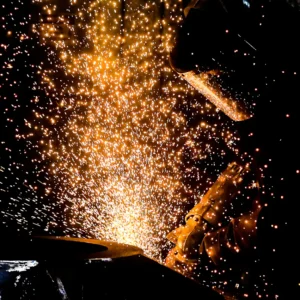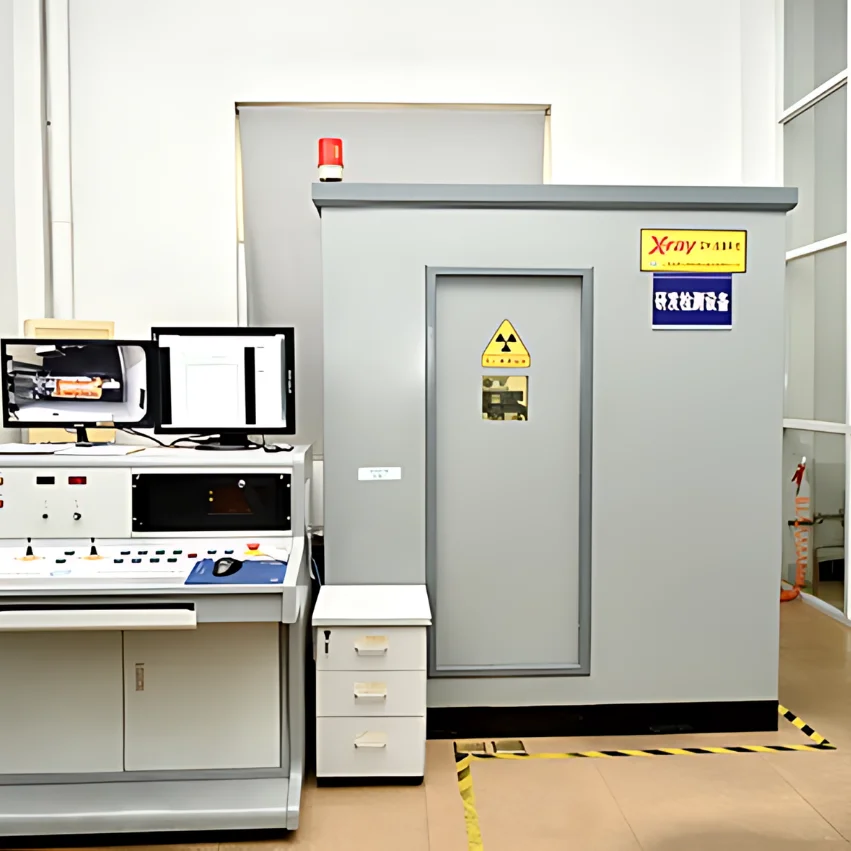CNC machining has many advantages since it is automated and uses computer-controlled machine tools to create parts from raw materials. Parts of varying degrees of complexity can be made through the CNC machining process. CNC machining is widely used in the medical, aerospace, and automotive industries where parts have to meet very strict requirements and tolerances during production.
With CNC machining, production can be 100 times faster than it was decades ago. So what is CNC machining and how does it work?
What Is CNC Machining?
CNC machining is an automated machining process that shapes an object or part by removing material from the workpiece until the desired shape is obtained. CNC stands for Computer Numerical Control, and it refers to how computer software is used to control the movement and operation of a machine.
CNC machines can work with metals, metal alloys, wood, stone, and other materials. Machine tools can come in different sizes depending on the part that needs to be made. Because CNC machines are controlled by computers, their versatility, efficiency, and accuracy are superior to other common manufacturing methods. As a result, CNC machining is popular in many fields and uses.
How Does CNC Machining Work?
In CNC machining, a computer program is used to plan how the machine should machine the part. The user cannot talk directly to the machine, so computer-aided design (CAD) software is used.
CAD software creates two- and three-dimensional models of the parts that the CNC machine needs to machine. The machine tool can use the design software to perform machining operations on the material. The computer controls calculate how much material needs to be removed so the finished part looks just like it did in the CAD program.
Let’s look at how the different steps in the CNC machining process are divided. CNC machining is usually divided into the following 4 steps.
Making a CAD Model
Before starting a CNC machining process, it is important to have a final plan in 2D or 3D. CAD software can be used to create this model. CAD software can be used to create this model. There are many CAD tools available on the Internet, both free and paid.
CAD modeling is not difficult to learn and can be done quickly. However, for some complex parts, you may need more CAD knowledge. For this, you can hire a professional designer.
Converting the CAD Model to a CNC File
Not all CNC machines do not understand the CAD language directly. Coordinates are the only way the CNC tool understands motion. Therefore, the CAD model needs to be converted into a G-code file that the CNC machine can read.
Many CAD programs can be written directly to the output file in G-code if the correct settings are used before saving the file.
Sometimes it is necessary to convert CAD drawings into G-code using special software called Computer Aided Manufacturing (CAM) CAM software is a very useful tool for automating the way a machine works.
In addition to CAM software, many simple, free tools can quickly convert simple CAD drawings into G-code. CAM software, on the other hand, has many more options than these tools.
Setting Up the CNC Machine Tool
CNC machines need to be set up correctly before manufacturing can begin. This is like setting up a printer before you print. You need to put paper in the printer and check certain settings. CNC tools work in the same way.
CNC machines require a lot of setup work before you can start machining parts. For example, you need to make sure that the workpiece is in the correct position on the machine. In addition, molds and other locations must be set up correctly.
Performing the Machining Task
Once the setup steps are complete, the machine is ready to start working. This can be done by running the program on the CNC machine screen. It may be necessary to go through different program prompts if certain settings and selections of the design are to be changed.
Once the CNC program is started, the machine will run until the end of the program. The program stops only when the operator closes the program or if there is an error or power failure.
What Are the Different Machining Processes Available on a CNC Machine?
There is no single CNC machine; there are many different types of CNC machines. Different types of machining tasks are usually accomplished by one or more CNC machining processes. Here are some of the most common CNC machining operations:
CNC Milling
CNC milling is one of the most common ways to manufacture items using CNC technology. Many specialized machine shops use CNC milling and CNC machining as the same thing. Face milling and peripheral milling are the two most common types of machining done on CNC milling machines.
On a CNC milling machine, cutting is accomplished with a rotating tool that moves around the workpiece. The cutting tool (also known as a milling cutter) is mounted on a spindle that can rotate. The ability to rotate and move the spindle allows the CNC milling machine to perform milling tasks in three or more axes.
CNC Drilling
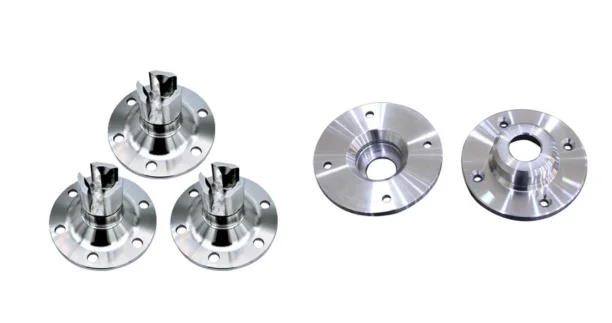
Using CNC drilling is much easier than using cutting or turning tools. When CNC drilling, the workpiece remains stationary and the drill moves over it and drills the holes.
The purpose of drilling can be to add screws and nuts, to make something look better, or for any other purpose.
CNC Grinding
CNC grinding machines use a rotating flat grinding wheel to remove material from rough workpiece surfaces. This method of machining is often used to create parts with smooth surfaces. The grinding wheels used for grinding move very fast.
CNC Routing
CNC Routing is very similar to CNC Milling. The main difference is that the workpiece in a CNC lathe never moves, but the cutting tool moves in the X, Y, and Z axes. CNC Routing cuts faster than a milling tool but without any loss of accuracy or design complexity.
Different Types of CNC Machines and Their Operation
In addition to the types of machining already discussed, there are other CNC machining processes. Some stand-alone manufacturing tools have built-in CNCs that can move automatically. The following are some additional CNC machines:
Broaching
With broaching, a toothed cutting head is used to create the basic shape of the workpiece. The cuts made by broaching are very precise and consistent. These machines can be either linear or rotary (cutting tools with rotating teeth).
Sawing
Toothed blades are used to make straight cuts. Due to friction with the saw blade, the cut carries away material and thus creates a kerf. When used in conjunction with a CNC, this method is often used for automated cutting.
Honing
Honing is somewhat similar to lapping and is usually used to give something a final polish. In honing, a rough stone or grinding wheel is used to polish a piece of metal in a controlled manner to the correct size, shape, or finish.
Lapping
Lapping is similar to grinding in some respects. On the other hand, to smooth a surface, grinding uses a mortar, powder, or mixture rather than a grinding wheel. Two materials, one of which is a workpiece, are placed together with the grit mixture sandwiched between them and then rubbed against each other.
CNC Lathe
A CNC lathe is the most commonly used tool for machining metal or wood. The workpiece rotates around a central axis in the lathe and the machining head moves in a straight line along the surface. In addition to cutting, drilling, cleaning, knurling, and facing, CNC lathes can do many other jobs. CNC lathes are much better than manual lathes.
Plasma Cutting Machine
A plasma cutting machine is an advanced cutting machine that uses a high-temperature plasma jet to cut items. Since plasma is produced by an electric arc, this method can only be used for electrically conductive objects.
Laser Cutting Machine
Laser-cutting machines use a laser beam to cut objects. Laser cutting does not only cut conductive materials. If the settings of the laser are changed, its beam can cut anything.
Flame Cutting Machine
Flame cutting uses an oxygen-acetylene (also known as oxygen-fuel) gas mixture to cut metal. If the oxygen-fuel stream is narrowed down and ignited, it produces an extremely hot spark that cuts through metal with ease.
Bending Machines
Bending machines are used to bend metal plates and sheets. These materials are placed between V-shaped or U-shaped dies. The dies are then pushed to produce the desired bend.
Electrical Discharge Machines

Electrical Discharge Machines (EDM) are used to cut conductive materials. In EDM, an electric pulse is emitted from a cutting head close to the object, creating an electric arc. At the proper location, the arc melts and removes the material, resulting in a cut.
Water Jet Cutting Machine
Water jet cutters use ultra-high-pressure water for cutting. These blades can cut metal, steel, wood, stone, glass, etc. The CNC controls the water jet and moves it according to the software.
What Are the Advantages of CNC Machining?
CNC machining technology has revolutionized manufacturing by reducing manual work and achieving unprecedented regularity and precision. Many consider it a modern-day boon because it has so many benefits.
It’s important for product designers to know if they should stick with CNC machining or if they should use another manufacturing method to make their parts.
Here are the main benefits of CNC machining.
Production Speed
One of the main reasons why CNC machining has become widely and quickly popular is because it is fast. With CNC machining, projects can be carried out faster because it eliminates the limitations of human labor.
Consistency
Computer Numerical Control (CNC) machining ensures that every part performs and looks the same. It is free from human error. As a result, CNC machining can produce accurate products in large quantities to achieve the desired results.
Waste Reduction
The traditional method of manual manufacturing suffers from a large number of human errors that lead to scrap in the quality control process. A lot of time and money is lost for this. Whereas the entire process of CNC machining is automated and hence there is not so much scrap.
Cost Saving
Labor costs include wages, breaks, and extra allowances for workers.
CNC machining reduces manufacturing costs by shortening production time and working hours. It does this through precision, speed, efficiency, and automation. Customers benefit from these cost savings, which gives businesses a competitive edge and an opportunity to spend money.
However, the price of CNC machining can also be affected by factors such as quantity, material selection, and geometry.
Material Versatility
Almost any material with sufficient hardness can be machined using CNC machines.
Tracking Manufacturing Data
Manufacturers can track the entire machining process of each part using the manufacturing data provided by the CNC machine. They can find the exact tooling used to make each part. If a problem occurs, the exact cause can be found immediately.
Accuracy
CNC machine tools are very accurate in their machining. With the right tools, manufacturers can even go beyond this limit. Such a high level of precision cannot be achieved by hand.
Summary
CNC machining is the most important process in modern manufacturing. It can start with the most basic raw materials and turn them into the different parts that people need. Because this technology is so powerful, it can machine sheet metal into airplane fuselages, car bodies, and wheels for cars to run on.
CNC machines are the best choice when you need to experiment, produce small samples, or mass produce. Best of all, you don’t need to own a CNC machine to use this process.
China Casting Synergy Group is a company that specializes in precision CNC machining and CNC prototyping. We can mill, turn, use EDM wire cutting, machine metal, and do other things. We have experienced designers and operators who can do 3, 4, and 5-axis CNC machining. So we can achieve a very high level of precision, quality, and sophistication in even the most complex projects.
We have many years of experience in this field and can therefore offer a comprehensive range of precision machining services to meet the needs of different businesses. Contact us today or ask for pricing to find out how our rapid prototyping and CNC machining services can help you with your next project.

